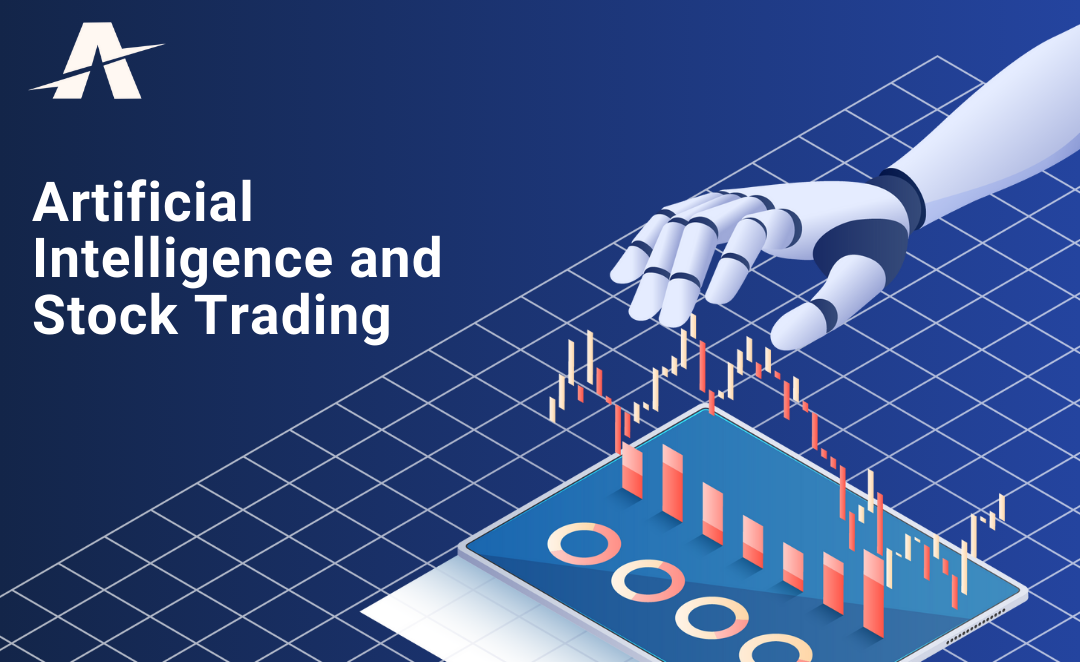20 Free Tips For Deciding On Best Ai Trading App Websites
20 Free Tips For Deciding On Best Ai Trading App Websites
Blog Article
Top 10 Tips To Evaluate The Accuracy Of Ai Trading Platforms That Predict Stocks Or Analyze Trading Data
You need to check the accuracy of AI trading platforms that predict and analyze prices of stocks. This will assure you're using a reliable tool. Here are the top ten suggestions to evaluate these platforms effectively:
1. Backtesting Results
What to look for: Ensure that the platform you choose to use allows you to perform back-testing in order to see how accurate its predictions were using historical data.
Why it is Important : Backtesting is a way to test an AI model by comparing its predictions against the results of previous tests.
Look for platforms that offer the capability of setting up parameters for backtesting.
2. Real-time performance tracking
What to Look for: Find out how the platform's performance is in comparison to current market conditions.
What's important: Real-time performances are more reliable indicators of the effectiveness of a platform than only historical backtesting.
Tip: Monitor real-time forecasts and compare them to actual market trends with a demo or trial for free.
3. Prediction Error Metrics
What to be looking for: To measure the accuracy of your predictions, evaluate the accuracy of your predictions using metrics such as mean absolute error (MAE), root mean squared error (RMSE) and R-squared.
Why It's Important: These measures provide a quantifiable measure of the degree to which predictions are in line with the actual outcomes.
Tip: Platforms who openly provide these measures are more transparent.
4. The Win Rate and the Success Ratio
What to Watch Out For: Check for the platform's winning percentage (percentage basing its success on accurate predictions) and its percentage of success.
What is important: High success rates and win rates indicate better accuracy in predicting and greater potential for profitability.
You should be wary of platforms which claim to have a high success rate (e.g. 90%) %+),) because the system cannot assure 100 100% success.
5. Benchmarking Market Indices
What to look out for: Compare performance and forecasts of the platform to important market indices.
What it does It can help determine if the platform is performing better or worse than the entire market.
Find consistency in performance, not only gains in a short period of time.
6. Consistency in Market Conditions
What to look out for: See how the platform's performance is affected by different market conditions.
What is important The platform that is robust must perform effectively under all conditions of the market not just when the market is in good shape.
TIP: Test the forecasts of the platform during volatile periods and market crashes.
7. Transparency in Methodology
What to look for: Understand the AI algorithms and models employed (e.g., neural networks and reinforcement learning).
Transparency of the methodology can be used to evaluate the scientific credibility and reliability of the platform.
Tips: Stay clear of platforms that employ "black box" models that do not explain the process by which predictions are made.
8. Tests and User Reviews
What to look out for Review reviews from other users and look for independent tests.
Why it is important: Independent test results and reviews provide objective information about the platform's accuracy and performance.
Look through forums like Reddit or copyright to see what other users have posted about.
9. Risk-Adjusted Returns
What to look out for You should look for risk-adjusted measures, such as the Sharpe Ratio (or Sortino Ratio), to gauge the performance of the platform.
What is important: These metrics account for the amount of risk required to achieve returns, providing an overall picture of the performance.
Sharpe Ratio: If it is high (e.g. greater than 1) it indicates greater returns when risk is taken into account.
10. Long-Term Track Records
What to Look for: Evaluate the platform's performance over time (e.g. 3 to 5 years).
Why It Matters : Long-term performances are more reliable than short term.
Do not use platforms that show only some short-term results or only show a few instances of success.
Bonus Tip: Use a Demo Account to test.
Try out the platform's real-time predictions with a trial or demo account, without having to risk your real money. You can test the accuracy and performance of the platform first-hand.
Use these guidelines to assess the accuracy, efficiency and the reliability of AI stock prediction and analysis platforms. It is then possible to select the platform that best aligns with your trading objectives and level of risk. Remember that no platform can be trusted, so using AI insights and your own research with the predictions of the platform is generally the best choice. View the best best ai for trading for more info including investing ai, ai invest, chatgpt copyright, free ai trading bot, using ai to trade stocks, best stock analysis website, ai options trading, ai investing app, stocks ai, using ai to trade stocks and more.
Top 10 Tips For Evaluating The Latency And Speed Of Ai Trading Platforms
Speed and latency are critical elements when it comes to evaluating AI stocks and analyzing trading platforms, specifically for active traders, algorithmic traders, and high-frequency traders. Milliseconds aren't the only thing that can impact trading execution and profit. Here are 10 top ways to measure the speed and the latency of trading platforms.
1. Real-Time data feeds can be used to evaluate the accuracy of the real-time data you have
Speed of data delivery Make sure the platform is able to deliver live data (e.g. sub-millisecond delay).
Data source proximity: To reduce the time it takes to transfer data, make sure if your platform's servers can be situated near major exchanges.
Data compression: Make sure that the platform is using efficient data compression to speed data delivery.
2. Speed of execution test for trades
Processing orders: The platform's capability to process and execute trades swiftly when an order is placed.
Direct market access: Check that the platform allows direct orders to be sent to the exchange.
Execution reports: Find out if the platform provides complete execution reports, which include timestamps for the submission of orders, confirmation of orders and fill.
3. Review the responsiveness of the Platform
Speed of the user interface (UI) Find out how fast the user interface of the platform responds to your inputs.
Updates to charts: Check that visualisations and charts update in real-time, without lag.
Performance of mobile apps If you are using a mobile application, make sure it is at the same speed as a desktop version.
4. Check for Low-Latency Infrastructure
Server Locations: Make sure whether the server used by the platform is with low latency located near major financial exchanges, hubs or other sites.
Co-location services: Find out if the platform offers co-location, which allows you to host your trading algorithm on servers that are close to the exchange.
High-speed networks: Verify that the platform uses fiber-optic high-speed networks or any other low-latency methods.
5. Test the backtesting and simulation speed
Historical data processing: Test how quickly the platform processes and analyzes the historical data to backtest.
Simultaneous simulation of trades The platform should be able to simulate trading in real-time without noticeable delays.
Parallel processing: Check if your platform uses parallel or distributed computing to accelerate calculations.
6. Determine API Latency
API response: The API's API is measured by the amount of time it takes to answer requests.
Rate limits: Verify if the API has reasonable rate limits to avoid delays during high-frequency trading.
WebSocket support: Determine whether the platform supports WebSocket protocols for real-time, low-latency streaming of data.
7. Test Platform Stability with Load
Trading scenarios with high volume: Check the stability of the platform and its adaptability by simulating trading scenarios.
Market volatility: Test the platform in times of high volatility in order to determine if it is able to cope with rapid price shifts.
Stress testing Check whether the platform allows users to test their strategy in extreme circumstances.
8. Examine Connectivity and Network
Internet speed requirements: To ensure optimal performance, make sure that your internet speed meets the speed of your preferred platform.
Redundant connection: Examine to determine if there are any redundant connections.
VPN latency: If using a VPN check whether it causes significant latency, and if the service provides alternatives.
9. Check for Speed Enhancement Features
Pre-trade Analyses: Make sure that the platform includes pre-trade analysis to improve execution speed and order processing.
Smart order route (SOR) The first step is to determine whether SOR is used by the platform to determine the fastest and cost-effective execution venues.
Monitoring latency: Find out if the platform offers tools to monitor and analyze the speed of latency in real time.
10. Review User Feedback and Benchmarks
Reviews from users: Search for user feedback on the site to gauge the speed and latency of the platform.
Third-party Benchmarks: Search for independent benchmarks that evaluate the speed of a platform to its rivals.
Case studies: Find out whether the platform has case studies or testimonials highlighting the platform's low-latency capabilities.
Bonus Tips
Free trial period: Try the platform’s latency and speed in real-world scenarios using the demo or free trial.
Customer support: Make sure that the platform offers assistance for issues related to latency or for optimization.
Hardware requirements: Determine if you need specific equipment to achieve the highest performance (e.g. high-performance PCs).
Utilize these suggestions to determine the speed and performance of AI platforms for predicting and analyzing stocks. Choose a platform that suits your trading requirements and minimizes the time it takes to complete transactions. A low latency, particularly for algorithms and high-frequency trading, is essential. Even minor delays could dramatically impact the profitability. Check out the top rated trader ai intal advice for more examples including investing ai, ai for trading, trader ai app, trading with ai, trade ai, copyright ai trading bot, ai for stock trading, trader ai app, best ai stock, best ai etf and more.